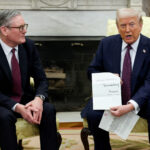Volvo Cars, the Swedish-based automaker owned by China’s Geely Holding, recently reported a sharp fall in earnings, leading to significant adjustments in its business strategy. The company announced plans to implement cost cuts amounting to 18 billion Swedish krona ($1.87 billion) and withdrew its financial guidance for 2025 and 2026, citing market turbulence and external factors impacting its performance.
1. Significant Drop in Operating Profit
Volvo’s first-quarter operating profit for 2025 fell drastically, from 4.7 billion Swedish krona last year to just 1.9 billion Swedish krona. This sharp drop in profit has been attributed to a variety of market challenges, including a slowdown in wholesales as part of a planned inventory reduction.

2. Narrowing EBIT Margin
The company’s earnings before interest and taxes (EBIT) margin also shrank significantly. The EBIT margin declined to just 2.3%, down from 5% in the same period last year, reflecting increased pressure on the company’s cost structure and the ongoing challenges in the automotive sector.
3. Adverse Currency Effects
Another factor contributing to the earnings drop was adverse currency effects. Fluctuations in foreign exchange rates negatively impacted Volvo’s revenue, adding another layer of complexity to its financial outlook.
4. Broader Automotive Industry Turmoil
The global automotive industry is facing significant turbulence, with new players entering the electric vehicle (EV) market and price competition intensifying. The pressure from new EV competitors, alongside ongoing macroeconomic challenges, has led to declining profit margins for traditional automakers like Volvo.
5. Volvo’s Global Cost-Cutting Action Plan
In response to these financial struggles, Volvo Cars has unveiled its “cost and cash action plan.” This plan includes an 18 billion krona reduction in costs through strategic cuts in investments and possible redundancies across its global operations. While the company has not disclosed the exact scale of layoffs, it has promised to provide further updates soon.
6. The Impact of U.S. Tariffs on Volvo’s Business
Volvo’s CEO, Håkan Samuelsson, highlighted the negative impact of U.S. tariffs, especially the 25% tariff on imported cars imposed by President Donald Trump. Volvo is currently exploring ways to mitigate these tariff effects by increasing local production in the U.S., particularly at its South Carolina plant. Samuelsson emphasized the importance of a trade deal with the U.S. to alleviate these pressures and ensure long-term business viability.
7. Focus on Electrified Vehicles
Despite these challenges, Volvo remains focused on its ambitious electrification goals. In the first quarter, the company reported that 43% of its sales were from “electrified cars,” which it defines as vehicles with a charging cord. By 2030, Volvo aims for 90% to 100% of its global sales volume to come from electrified vehicles. This shift is part of the company’s broader strategy to align with the growing demand for electric cars and future-proof its product lineup.
Volvo Cars CEO calls for a U.S. trade deal
In its earnings report, the company said it would sharpen its U.S. product line-up to focus on growth and explore how it could “better use” its existing manufacturing footprint in the coming years, in order to produce “more cars where they are sold.”
U.S. President Donald Trump imposed 25% tariffs on cars imported to the U.S. earlier this month. The White House has said it also plans to place tariffs on some auto parts such as engines and transmissions, which are set to take effect no later than May 3.
“We see long-term, we need, of course, to come back to some kind of trade deal with the U.S. Otherwise, this is of course going to be very difficult for the business in the U.S.,” Samuelsson said.
Alongside making more cars locally, Samuelsson said the automaker is exploring how it can utitilize its South Carolina factory more effectively.
“We are looking into utilizing our Charleston factory better. So, we need another car into that factory and that has to be a best-seller for the U.S. market. It’s something that we otherwise need to import and pay tariffs for. So, that’s really the countermeasures we are taking,” Samuelsson said.
Volvo Cars’ sales share of “electrified cars,” which it defines as any vehicle with a charging cord, hit 43% in the first quarter. It aims for the category to represent 90% to 100% of its global sales volume by 2030.
Conclusion
Volvo Cars faces numerous challenges, from declining profits to external market pressures and tariff concerns. However, the company is taking steps to adapt, including cutting costs, reducing investments, and enhancing its U.S. operations. While the short-term outlook remains uncertain, Volvo’s long-term strategy is centered on electrification and local production to weather the storm.









